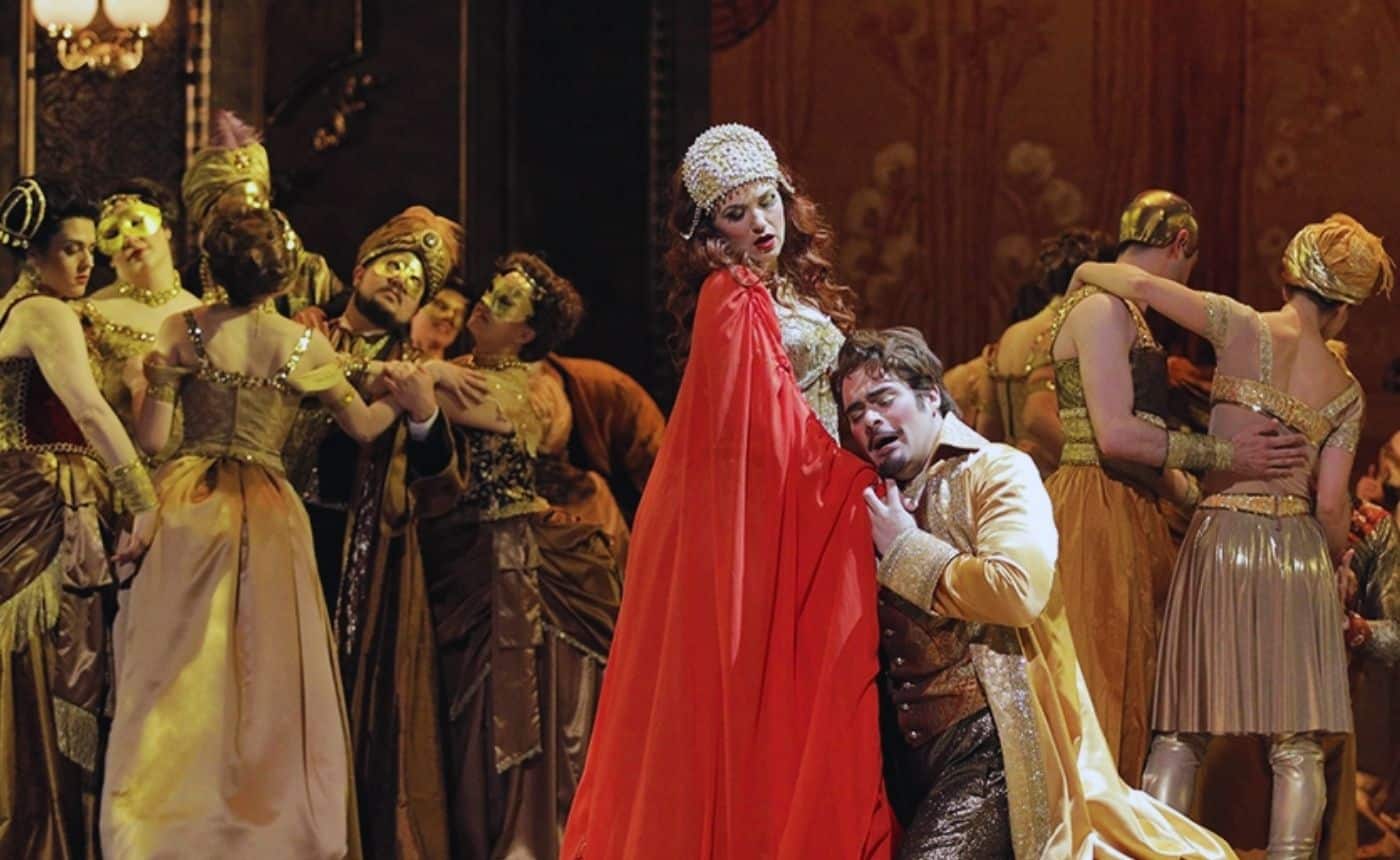The Marriage of Figaro – Figaro as opera buffa
by Luke Howard
Figaro was a success for Mozart in Vienna. Even though his operas in general met much opposition in that city, this one was so popular that the Emperor had to issue an edict stating that only the arias could be encored, not the ensembles, otherwise the performance would last the whole night. But it was in Prague that Figaro made its biggest splash, and led directly to a commission for Mozart’s next opera buffa, Don Giovanni, in 1787.
With two centuries of hindsight it’s easy to see the entire trajectory of Mozart’s operatic career, and we know now that Figaro was a crucial turning point for him. Previous to this, Mozart had dabbled both in Singspiel—a lighter style of music drama, with spoken dialog—and Italian opera seria. Not counting his youthful works such as La finta semplice (1768) or the incomplete Lo sposo deluso (1784), The Marriage of Figaro is Mozart’s first mature foray into opera buffa, a genre that would dominate the remainder of his opera composition.
Opera buffa, or Italian comic opera, was still a relatively new genre when Mozart took it on board. It had grown out of the comedic intermezzi that had typically been staged in-between acts of a larger, serious opera (often in front of the curtain, or with very simple sets), and had reached a high point in the middle of the 18th century. Opera buffa usually distinguished itself from opera seria by having only two acts (instead of three), by indulging in a greater proportion of comedic content that would appeal to the common mindset (rather than elevated stories of kings and gods), and by making a bass (instead of a castrato) one of the principal characters. In every respect, opera buffa was more “real” and populist in its intent than opera seria.
But Mozart had learned much from his prior experience with opera seria and Singspiel that he could apply to Figaro. He had mastered the old serious operatic genre as early as 1772 with Lucio Silla. When he wrote Idomeneo in 1780-81, he had the expert Mannheim Orchestra—the best orchestra in Europe—in the opera pit. And with Abduction from the Seraglio in 1782, he had demonstrated an advanced sensitivity to musico-comic effects. He was then able to draw on all these experiences when composing the score of Figaro.
With his prior experience writing for the Mannheim Orchestra, Mozart uses the orchestra more fully in his characterizations of the central players in Figaro. For example, as Figaro and Susanna discuss in the opening scene the various merits and demerits of their new bedroom, they sing a duet about the bells that the Count and Countess can ring to summon the servants. When Susanna and Figaro mention the Countess’s bells, flute and oboe (safe, “pastoral” instruments) echo the sound, but when they mention the Count’s bells, the orchestra answers with bassoon and horn. Horns had long functioned as a symbol of sexual infidelity in European literature and music, and while Figaro does not seem to notice, Susanna does. So the orchestral retort to the Count’s bells wasn’t just a dropping of register and a change of timbre, it was primarily an indication to the audience that Susanna understood much better than Figaro the moral danger she faced.
That kind of instrumental detail passes in a flash, but is indicative of the attention Mozart paid to orchestration throughout the opera as a means of highlighting the drama on stage—something he had learned from Idomeneo as much as from Gluck’s operatic reforms of the previous two decades.
Furthering the development of humorous group scenes from Abduction, the comic ensemble—a specialty of Mozart’s—reaches its full development in Act III of Figaro with the sextet “Riconoci in quest’ amplesso.” Here, with Oedipal overtones, Bartolo and Marcellina discover that they are actually Figaro’s parents, leading to amusing misinterpretation, sudden changes of emotion, and ludicrous explanations. (This is exactly the kind of plot device that Gilbert and Sullivan will parody so masterfully a century later!)
A typical opera buffa included both serious and comic characters, but with Figaro Mozart introduced the mezzo carattere or “middle character”—a character who can be at times both serious and comic. With the inclusion of such characters, especially the Countess in Figaro, the genre of comic opera takes on an added seriousness. It remains a funny story but with solemn undertones, a feature that would be emphasized even more profoundly in Don Giovanni the following year.
There are, indeed, passages in Figaro that would sound just as much at home in a true opera seria, such as the Countess’s heartfelt laments, “Porgi amor” and “Dove sono.” They strike us as especially moving because they are contained within a primarily lighthearted context.
These arias, perhaps the most serious moments in the opera, are then paralleled and dramatically balanced by the opera’s finale, where true love and fidelity win out over lust, disloyalty, and emotional manipulation.
But unlike opera seria, where the little comic interludes are simply a respite, Mozart understood that the serious interludes and the mezzo carattere in Figaro are essential to its success. Without them, the story could easily devolve into mere parody and farce. With them, though, we are taught something essential about the human condition. It’s part of Mozart’s almost limitless genius that he can make comedy and poignant understanding coexist in entrancing music.
Dr. Howard began his formal music studies in Sydney, Australia, where he received the Bachelor of Music Education degree with an emphasis in piano. He then earned a Master of Arts in Musicology from BYU in 1994, and a Ph.D. in Musicology from the University of Michigan in 1997. Dr. Howard has previously served on the music faculties at Minnesota State University Moorhead and the University of Missouri Kansas City. In 2002, he joined the faculty of the School of Music at Brigham Young University where he teaches music history and Western cultural history.





